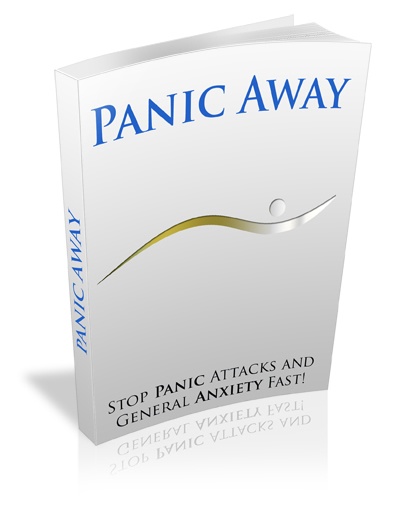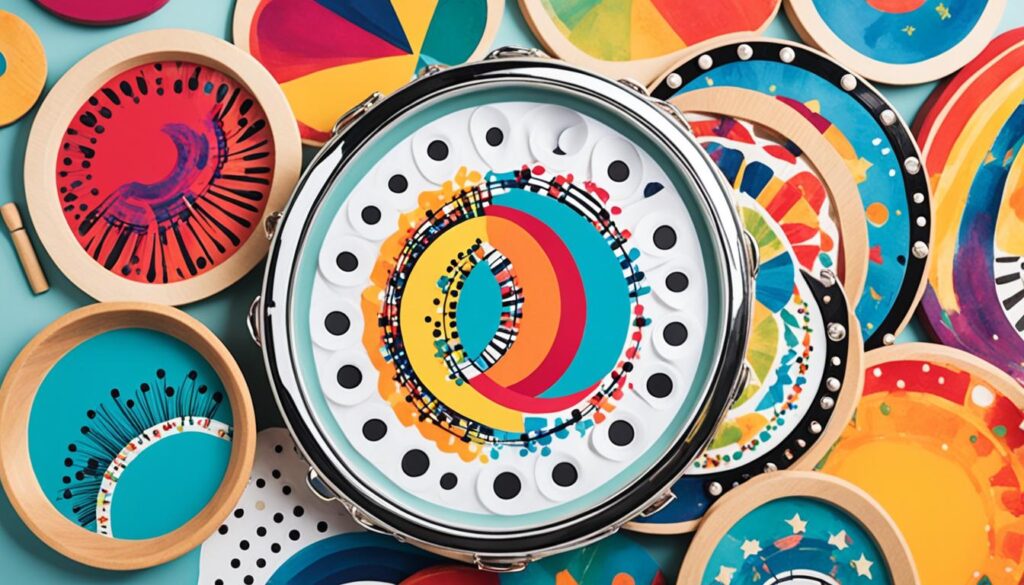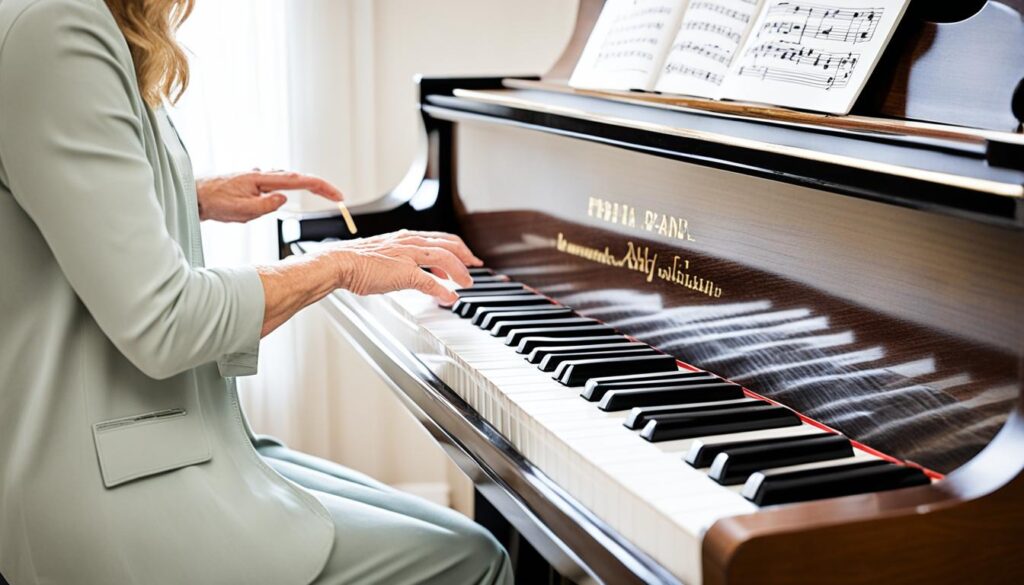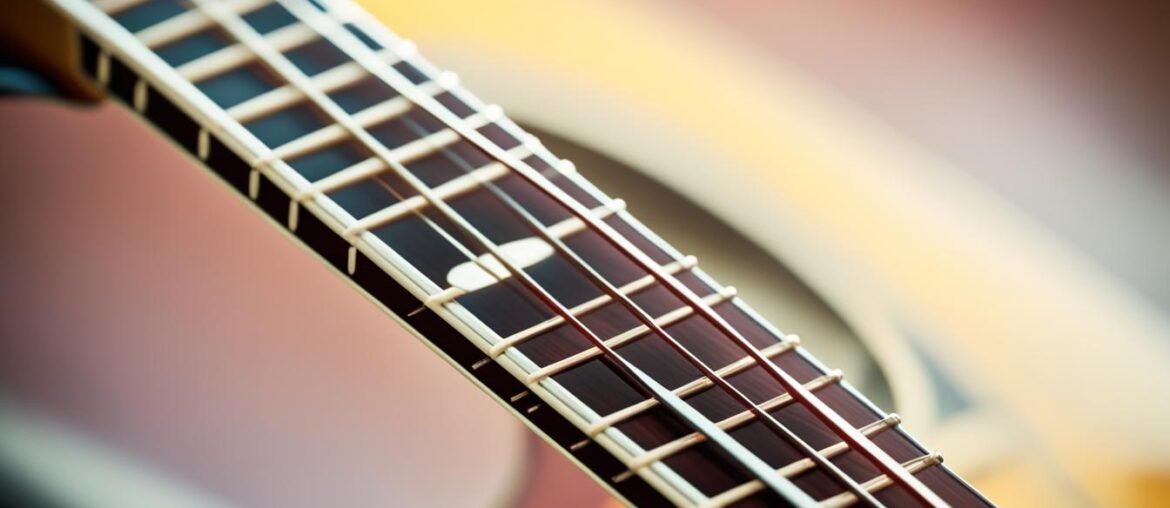Are you looking for a natural and effective way to find peace amidst the chaos and anxiety of everyday life? Music therapy might be the answer you've been searching for. As someone who has personally experienced the transformative power of music, I can attest to its ability to calm the mind, heal the soul, and provide a much-needed respite from the stresses of modern living. Through the skilled use of various instruments, music therapists have the incredible ability to create a safe and nurturing space where anxiety melts away and a sense of tranquility takes hold.
Whether it be the rhythmic beat of a drum, the melodic tones of a piano, or the soothing sounds of a ukulele, each instrument used in music therapy serves a unique purpose in promoting emotional well-being and anxiety relief. In this article, I will guide you through the fascinating world of music therapy instruments, exploring their therapeutic benefits and how they can help you find solace in times of turmoil.
Our Top Pick For Beating Panic Attacks

Stopping, and preventing, panic attacks is now even easier.
Key Takeaways
- Music therapy instruments offer a powerful way to find relief from anxiety and promote mental well-being.
- Hand-held percussion instruments provide sensory exploration and foster social skill development.
- The melodica offers a versatile means of self-expression through improvisation and duetting.
- Maracas are simple yet effective instruments that support motor skills and boost self-esteem.
- The tambourine, a portable instrument, aids in coordination, social skills, and motivation.
Hand-held Percussion Instruments
Hand-held percussion instruments are versatile and offer sensory and creative potential in music therapy sessions. These instruments, such as clatterpillars, guiros, frog guiros, Boomwhackers, cabasas, and beaters, provide a range of sounds and textures for clients to explore.
These instruments can support various aspects of development, including social skill development, gross and fine motor skills, and self-esteem building. Clients can engage in success-based musical activities that boost confidence and enhance their overall well-being.
| Instrument | Description |
|---|---|
| Clatterpillars | Colorful wooden percussion instrument made up of interconnected pieces that produce a clattering sound when shaken or rolled. |
| Guiros | Latin American percussion instrument made of wood or plastic, featuring ridges that produce a raspy sound when scraped with a stick. |
| Frog Guiros | Carved wooden percussion instrument shaped like a frog, with ridges on its back that create a unique scraping sound when rubbed. |
| Boomwhackers | Tuned percussion tubes made of plastic that produce musical pitches when struck against a surface or each other. |
| Cabasas | Percussion instrument consisting of metal beads wrapped around a cylinder, creating a shaking or rattling sound when rotated or shaken. |
| Beaters | Various types of mallets or sticks used to strike or play different hand-held percussion instruments, producing different sounds and tone qualities. |
Exploring hand-held percussion instruments allows clients to experiment with different techniques, create rhythms, and engage their senses in a therapeutic and enjoyable manner. These instruments can be used individually or in group settings to promote social interaction and collaboration.
Melodica
In music therapy for anxiety relief, the melodica is a highly favored instrument. This keyboard instrument provides a unique and expressive outlet for clients to explore their emotions and find solace in music. With its metal reeds and blown mechanism, the melodica can produce both melodies and chords, allowing for versatility in therapeutic sessions.
The melodica offers clients a powerful “voice” as they control the sound with their breath and fingers. This interactive element encourages a sense of ownership and self-expression, empowering individuals to connect with their emotions and find comfort through music. The instrument's portability also makes it suitable for use during individual or group sessions, providing opportunities for collaboration and improvisation.
Moreover, the melodica facilitates a variety of musical interactions, such as turn-taking and duetting. By engaging in musical dialogues with the therapist or fellow clients, individuals can enhance their communication skills, build confidence, and foster a sense of connection within the therapeutic space.
Benefits of the Melodica in Music Therapy
“The melodica offers clients a unique way to express themselves and engage in interactive musical experiences. Its versatility and ability to produce melodies and chords make it a valuable instrument for anxiety relief in music therapy sessions.” – Sara Johnson, Music Therapist
Using the melodica in music therapy for anxiety relief provides the following benefits:
- Facilitates self-expression through music
- Enhances communication skills through turn-taking and duetting
- Offers a portable and versatile instrument for individual or group sessions
- Encourages musical improvisation and creativity
Overall, the melodica serves as a powerful tool in music therapy, allowing individuals to tap into their emotions, find solace, and confidently express themselves through music.

| Benefits of the Melodica in Music Therapy |
|---|
| Facilitates self-expression through music |
| Enhances communication skills through turn-taking and duetting |
| Offers a portable and versatile instrument for individual or group sessions |
| Encourages musical improvisation and creativity |
Maracas
Maracas are simple yet powerful instruments used in music therapy for anxiety relief. They offer a range of benefits and are particularly effective in supporting social skill development, motor skills, and self-esteem.
The simplicity of maracas makes them easily accessible to individuals of all ages and abilities. They require minimal effort to produce sound, which elicits a positive response and creates an immediate sense of accomplishment. This simplicity, combined with the rhythmic nature of maracas, makes them an ideal instrument for individuals dealing with anxiety.
When used in music therapy sessions, maracas can promote social skill development by encouraging communication, cooperation, and turn-taking. Clients can participate in group activities that involve taking turns playing the maracas, allowing them to develop their social skills and interact with others in a supportive and inclusive environment.
Maracas also offer opportunities for motor skill development. The act of grasping and shaking the maracas helps refine gross and fine motor skills. Clients can work on their coordination and dexterity while enjoying the rhythmic sound produced by the instrument.
Moreover, the success-based nature of playing maracas can significantly boost self-esteem. As clients experience the immediate and tangible result of producing sound, they gain a sense of achievement and confidence in their abilities. This positive reinforcement contributes to their overall well-being and emotional growth.
Overall, maracas are a versatile and effective instrument in music therapy for anxiety. They provide a simple yet engaging experience that supports social skill development, motor skills, and self-esteem. Incorporating maracas into therapy sessions can create a positive and empowering environment for individuals seeking relief from anxiety.
Quotes:
“Maracas are a wonderful instrument that allows clients to express themselves while providing a sense of accomplishment. I have seen firsthand how playing maracas can enhance social interactions and boost self-esteem in my music therapy sessions.” – Music Therapist
Benefits of Maracas in Music Therapy for Anxiety
| Social Skill Development | Motor Skills | Self-Esteem |
|---|---|---|
| Social interaction | Gross and fine motor skill refinement | Immediate sense of accomplishment |
| Communication and cooperation | Coordination and dexterity | Positive reinforcement |
| Turn-taking and sharing |
Tambourine
Despite its simplicity, the tambourine is an essential instrument in music therapy for anxiety. It is a portable instrument that offers accessibility and versatility in therapeutic settings. The tambourine's distinct timbre can create a rewarding and engaging experience for clients.
The tambourine can be used in various ways to support therapeutic goals. It can be utilized for sharing and turn-taking, allowing clients to interact and collaborate with others. Through movement and musical games, the tambourine encourages coordination and motor skill development.
Furthermore, the tambourine serves as a tool to enhance social skills. Clients can engage in rhythmic activities and group interactions, fostering communication and cooperation. These social interactions can have a positive impact on motivation and a sense of belonging.
Good quality tambourines produce a pleasing tone and sensory feedback, further enhancing the therapeutic experience. The resonant sound of the tambourine can evoke positive emotions and create a calming atmosphere, promoting relaxation and reducing anxiety.

Benefits of the Tambourine in Music Therapy for Anxiety:
- Portable instrument that can be used in various therapeutic settings
- Improves coordination and motor skills
- Enhances social skills and promotes communication
- Inspires motivation and a sense of belonging
- Produces a pleasing tone and sensory feedback
Overall, the tambourine is a valuable tool in music therapy for anxiety relief. Its simplicity, versatility, and ability to promote coordination, social skills, and motivation make it an indispensable instrument in the therapeutic journey.
Djembe Drums
In music therapy for anxiety, djembe drums are a versatile tool that offers significant benefits. These drums create powerful rhythms and sounds that resonate with individuals at every stage of development. The unique structure and rhythm of drumming can have a profound impact on the brain, influencing thinking, perception, and learning abilities.
One of the remarkable qualities of djembe drums is their ability to improve non-verbal communication skills. Through drumming, individuals can express themselves, connect with others, and reduce feelings of isolation. The rhythmic patterns and beats produced by the djembe drums stimulate emotional well-being, promoting a sense of unity and community.
Group music therapy sessions often incorporate djembe drums as a means of facilitating social connection and building self-esteem. The collective experience of drumming together fosters a sense of belonging and cooperation. Additionally, the physical act of playing the djembe drums can release endorphins and promote a positive mood, enhancing overall emotional well-being.
The Benefits of Djembe Drums in Music Therapy for Anxiety:
- Enhances non-verbal communication skills
- Reduces feelings of isolation
- Promotes emotional well-being
- Fosters social connection and unity
- Boosts self-esteem
- Stimulates positive mood
Overall, djembe drums serve as a powerful therapeutic tool in music therapy for anxiety. Their rhythmic qualities, ability to enhance non-verbal communication, and impact on emotional well-being make them an invaluable instrument in promoting overall mental health.
Guitars and Ukuleles
In music therapy for anxiety, guitars and ukuleles are highly valued instruments due to their accessibility and versatility. They are suitable for clients of all abilities, allowing therapists to engage with minimal skills and offer a wide range of therapeutic possibilities.
These instruments provide opportunities for accompaniment, strumming, and plucking, allowing clients to express themselves and enhance their musical experiences. Whether it's strumming chords on a guitar or plucking the nylon strings of a ukulele, these instruments offer a sense of empowerment and creative expression for individuals seeking anxiety relief through music therapy.
Accessible Instruments for All Abilities
One of the main advantages of guitars and ukuleles in music therapy is their accessibility. Both instruments are relatively easy to learn and can be played at different skill levels. This accessibility allows individuals with varying abilities to participate and engage in music therapy sessions, regardless of their previous musical experience.
Guitars and ukuleles come in different sizes, making them suitable for adults and children alike. This versatility ensures that clients of all ages can experience the benefits of playing these instruments, fostering a sense of inclusivity and engagement within the therapeutic setting.
Enhancing Songs and Improvisations
Both guitars and ukuleles are excellent accompaniment instruments that can enhance songs and improvisations in music therapy sessions. The rhythmic strumming patterns of a guitar or the gentle plucking of ukulele strings can create a supportive musical foundation for clients to explore their emotions and express themselves.
Therapists can encourage clients to play chords or melodies on the guitar or ukulele, enabling them to actively participate in the creation of music. This collaborative approach fosters a sense of connection and empowerment, allowing clients to engage in meaningful self-expression through an accessible and familiar instrument.
Personal Expression and Emotional Release
Guitars and ukuleles provide a platform for personal expression and emotional release in music therapy. Clients can strum and pluck the strings, creating beautiful melodies that reflect their inner experiences and emotions. This process can be a cathartic form of self-expression, allowing clients to release tension, anxiety, and stress through music.
Playing the guitar or ukulele can also serve as a grounding technique, helping individuals focus their attention on the present moment and reconnect with their bodies, thoughts, and emotions. The act of strumming or plucking strings provides a soothing sensation, promoting relaxation and reducing anxiety.
Playing the guitar or ukulele in music therapy can be a powerful tool for individuals seeking anxiety relief. These instruments offer a means of self-expression, creative exploration, and emotional release, empowering clients to find comfort and solace in their musical journey.
Comparison of Guitars and Ukuleles
| Features | Guitar | Ukulele |
|---|---|---|
| Size | Various sizes available, suitable for adults and children | Smaller than a guitar, ideal for portable use and smaller hands |
| Number of Strings | Typically six strings | Four strings |
| Tuning | Standard tuning (E, A, D, G, B, E) | Variations include GCEA, DGBE, and others |
| Sound | Rich and full-bodied | Bright and lively |
| Playing Style | Strumming, fingerpicking, and various playing techniques | Strumming, fingerpicking, and simple chord progressions |
| Music Genres | Wide range of genres, including pop, rock, folk, and classical | Commonly used in Hawaiian, folk, and indie music |

As shown in the table above, guitars and ukuleles have distinct features that make them unique instruments in music therapy. While guitars offer a rich and full-bodied sound with a wide range of playing techniques, ukuleles are smaller and produce a bright and lively tone, making them ideal for portable use and smaller hands.
Both instruments provide valuable opportunities for therapeutic engagement, personal expression, and anxiety relief. Whether it's strumming chords or plucking strings, the guitars and ukuleles have the power to create a harmonious atmosphere and facilitate clients' emotional well-being.
Piano
The piano is a central instrument in music therapy, offering a wide range of possibilities for expression and therapeutic goals. As a non-verbal tool, it allows clients to communicate and connect emotionally through the power of music. By exploring the keys of a piano, individuals can engage their fine motor movements and create unique musical expressions that reflect their identity.
The piano provides a platform for self-expression, enabling clients to convey their emotions, thoughts, and experiences without the need for words. This non-verbal connection fosters a deep sense of understanding and empathy between the therapist and client, enhancing the therapeutic process. The piano's versatility allows it to be utilized in various therapeutic approaches, including improvisation, composition, and guided musical experiences.
Through the piano's melodic and rhythmic patterns, clients can achieve therapeutic goals such as emotional release, self-awareness, and stress reduction. The act of playing the piano can promote relaxation, as the repetitive motions and soothing sounds create a calming effect. Additionally, the piano's rich harmonies and expressive range enable clients to explore and express complex emotions in a safe and supportive environment.

The piano is an ideal instrument for fine motor movement exercises, as it requires precise finger coordination and dexterity. Therapists can design activities that target specific motor skills, helping clients improve their hand-eye coordination, finger strength, and overall motor control. These exercises can be tailored to the individual's abilities and progress, providing a sense of achievement and accomplishment.
“The piano has been an incredible tool for my clients in music therapy. It allows them to express themselves and connect on a deep level without the need for words. The therapeutic benefits of piano playing are truly remarkable.”
Benefits of Using Piano in Music Therapy for Anxiety:
- Enhances non-verbal communication and emotional expression
- Promotes relaxation and stress reduction
- Aids in fine motor movement and coordination
- Allows for self-expression and identity reflection
- Supports therapeutic goals and emotional release
| Benefits | Examples |
|---|---|
| Non-verbal Communication | Using piano to express emotions that words cannot capture |
| Relaxation and Stress Reduction | Playing soothing melodies to promote a sense of calm |
| Fine Motor Movement | Performing finger exercises and scales to improve dexterity |
| Self-Expression and Identity Reflection | Creating original compositions that reflect personal experiences and emotions |
| Therapeutic Goals and Emotional Release | Using piano playing as a tool for catharsis and emotional exploration |
Conclusion
Music therapy using a variety of instruments is a powerful tool for relieving anxiety and promoting mental health. The soothing sounds and techniques of music therapy create a positive impact on overall well-being.
By incorporating hand-held percussion instruments, melodica, maracas, tambourine, djembe drums, guitars and ukuleles, and the piano, clients have unique ways to express themselves and engage in therapeutic experiences. These instruments offer opportunities for self-expression, social skill development, and success-based activities that boost self-esteem and confidence.
Music therapy provides an effective approach for anxiety relief, allowing individuals to immerse themselves in the soothing sounds and techniques to find comfort and relaxation. Whether it's the rhythmic beats of the djembe drums or the gentle melodies of the melodica and piano, each instrument contributes to the therapeutic journey.
As we continue to explore the power of music therapy in supporting mental health, incorporating these instruments can provide an enriching and transformative experience for individuals seeking anxiety relief. Through this holistic approach, music therapy offers a path to wellness, harnessing the healing power of music to improve overall well-being.
FAQ
What are the top instruments used in music therapy for anxiety relief?
The top instruments used in music therapy for anxiety relief include hand-held percussion instruments, melodica, maracas, tambourine, djembe drums, guitars and ukuleles, and the piano.
How do hand-held percussion instruments contribute to music therapy for anxiety?
Hand-held percussion instruments like clatterpillars, guiros, frog guiros, Boomwhackers, cabasas, and beaters offer a range of sounds and textures for clients to explore. They support social skill development, gross and fine motor skills, and create success-based musical activities that improve self-esteem and confidence.
What role does the melodica play in music therapy for anxiety relief?
The melodica is a blown instrument that provides a powerful “voice” for clients to control with their breath and fingers. It can be used for improvisation, turn-taking, and duetting, allowing clients to express themselves and engage in interactive musical experiences.
How are maracas used in music therapy for anxiety?
Maracas are easily accessible instruments that elicit a positive response and require minimal effort to produce sound. They are commonly used to support social skill development, gross and fine motor skills, and create success-based musical activities that improve self-esteem and confidence.
What makes the tambourine an essential instrument in music therapy for anxiety?
The tambourine is a portable and rewarding instrument that can be used in various ways, such as sharing, turn-taking, movement, and musical games. It improves coordination, social skills, and motivation to play, thanks to its pleasing tone and sensory feedback.
How do djembe drums contribute to music therapy for anxiety relief?
Djembe drums are versatile instruments that resonate with individuals at every developmental stage. The unique structure and rhythm of drumming can impact the brain, improving non-verbal communication skills, reducing isolation, and enhancing mood and emotional well-being.
Why are guitars and ukuleles popular in music therapy for anxiety?
Guitars and ukuleles are accessible instruments that can be played by therapists with minimal skills. They offer opportunities for accompaniment, strumming, and plucking, making them suitable for clients of all abilities to enhance songs, improvisations, and personal expression in music therapy sessions.
How does the piano contribute to music therapy for anxiety relief?
The piano is considered one of the most important instruments in music therapy, offering unique opportunities for non-verbal connection and self-expression. Exploring the keys of a piano can enhance an individual's experience of themselves in music therapy, reflecting their identity and supporting therapeutic goals.
What is the role of music therapy in anxiety relief and mental health?
Music therapy using various instruments is a powerful tool for anxiety relief and promoting mental health. Instruments like hand-held percussion, melodica, maracas, tambourine, djembe drums, guitars and ukuleles, and the piano offer unique ways for clients to express themselves, engage in therapeutic experiences, and achieve therapeutic goals.



